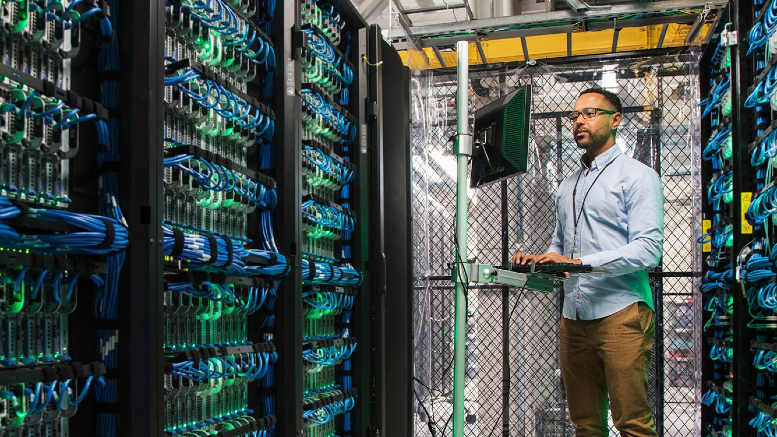Fear and AI: Debunking the Myths that May Be Blocking Your Business
September 29, 2022 / Unisys Corporation
Few technological advancements have enchanted the public’s imagination like artificial intelligence (AI). As illustrated in books like 2001: A Space Odyssey, the iconic “Terminator” movies, and the unsettling “West World” series, AI is often depicted as a sentient machine that seeks to destroy humanity. As a result, most rhetoric around AI is entrenched in fear – which is often rooted in misunderstanding and mistrust.
Interestingly, the concept of AI can be traced back to ancient Greece with the story of Pandora’s box, in which the Greek God Hephaestus created an artificial being under the command of Zeus to punish humans for stealing the first of fire. With the capability to unleash her jar of misery, the story of Pandora inspired today’s term “black box,” referring to an impenetrable system.
Today, AI is still a black box – so much so that even its creators don’t fully understand how it works. But its potential to improve society is undeniable. Already, it’s become integral to the most demanding and fast-paced industries, businesses seeking a competitive advantage, and governments seeking to serve citizens better. And as AI capabilities have matured, they are revolutionizing everything from the food we eat to how we work.
Despite this, the rhetoric around AI is still entrenched in fear and the narratives of dystopian folklore. Let’s delve into common misconceptions surrounding AI – and put them to bed at last.
Myth #1: AI will eliminate the need for human knowledge workers.
One of the biggest fears about AI is that it will replace jobs currently done by humans – and for good reason. History tells us that job displacement often occurs as new technologies and tools emerge. Think of how steam engines transformed manufacturing processes, the discovery of electricity drove mass production, and the computer chip brought us semiconductors and PCs that do the work of countless people. Every period of technological and tool advancement – or industrial revolution – has led to a paradigm shift in our economic and social systems.
Currently, we’re all living through the 4th Industrial Revolution, which is being driven by advancements in AI, robotics, the Internet of Things (IoT), cloud, genetic engineering, quantum computing, and other digital technologies. While there are uncertainties surrounding the potential of this new industrial revolution, one thing is certain: it will dislocate workers in job markets. However, dislocation does not mean the elimination of jobs for people. While AI and automated machines will eliminate certain roles and functions, they will also create new types of jobs and industries. In fact, the World Economic Forum estimates that while 85 million jobs will be replaced by machines in 2025, it will create 97 million new ones.
People will be needed more than ever – but just for different types of jobs. The challenge will be improving the quality of education and training to prepare humans for these jobs. They will require 21st-century skills such as sophisticated communication skills, complex analytical skills, and creativity to innovate and solve complex problems – a capability that AI can’t replace. In addition, people will need to understand the emerging technologies powering the 4th Industrial Revolution.
Myth #2: AI will develop into a dangerous superintelligence.
The second pervasive fear is that AI will develop superintelligence and become a “monster” beyond human control. This fear harks back to AI being a “black box” developed mysteriously and destined to destroy humanity.
While there’s chatter of AI sentience already here (for example, in Google’s AI chatbot, LaMDA), the reality is that we currently only have “Narrow AI” available to us, which is AI that is trained to perform a specific task. (Your Google browser and Spotify radio mix app are examples of Narrow AI.) Chatbots (such as Facebook’s) and self-driving cars are on the cusp of General AI (described as AI with human-like intelligence), but we have a long way to go. Even IBM Watson has not lived up to expectations as a reliable learning engine; it beat humans at Jeopardy and can predict the efficacy of cancer treatments, but it still struggles with simpler tasks such as language recognition.
In reality, superintelligence remains a distant theoretical possibility, not a practical reality. The reality is that AI is helping humans solve problems and improve everyday lives in an increasingly complex and digital world. Thinking of AI as a monolithic monster distorts the fact that AI is not a standalone technology but rather an umbrella term for everything from cognitive computing and machine learning to deep learning and just plain-old algorithms. AI can be simple and complex – and it can be embedded in other things and applications to make life and work safer and easier. Consider how:
-
Higher education organizations are using AI, automation, and sentiment analytics to build their brands, improve student attraction, boost education outcomes, and build life-long learning relationships.
-
Apple’s security FaceID uses Neural Engine and Facial Recognition to protect your phone from being accessed by others.
-
Credit card companies use machine learning to prevent fraud by regularly monitoring each customer’s spending habits, including intervals between transactions, typical geographic locations, and more. AI can draw correlations to determine when a transaction is fraud – and protect your money and reputation.
-
Apps like Uber and Lyft use AI to instantly identify drivers closest to the user, analyze real-time demand data to set the price for the journey, and guide the driver to you using the fastest possible path.
The magic behind all this is AI –it’s crucial to helping us safely navigate and thrive in the modern world.
Myth #3. AI is too expensive for most companies.
There is also a misconception that AI is so costly that it will only be available to large enterprises, which will make them even more powerful and market-dominating. But this is not the case – at least not anymore. While some applications require heavy lifting from costly and hard-to-find data scientists, a growing number of AI tools are designed specifically for business users so they can incorporate AI into their processes and workflows. All people need to be successful is a logical mind, good analytical data, and strategic skills.
We are also seeing more business applications, including ERP and CRM, delivered with AI already embedded into everyday workflows. These uses of AI can:
-
Power knowledge graphs and natural language processing will vastly improve data security, personal security, financial trading, healthcare, marketing personalization, fraud detection, recommendations, online searches, NLP, smart cars, and more.
-
Help HR departments intelligently – and quickly – scan thousands of resumes to identify the top candidates for jobs in a way that is less subject to bias.
-
Automate the most monotonous and tedious parts of many jobs – the parts people hate to do – so that they are more engaged, satisfied, and free to do more value-added work.
The endless possibilities are available today, often through SaaS-based cloud software that is affordable and easy to access.
The Truth: AI is not a threat, but it will change the world
It’s time to step back from the grim fantasies of AI and embrace the AI revolution – because it’s here to stay, transforming the world and work as we know it. According to Gartner, by 2025, 50% of enterprises will have platforms to operationalize AI.
The truth is, AI is a powerful tool that can make companies more productive, jobs more satisfying, and our lives – and world – better. It can invisibly work alongside humans to help them make better decisions, head off problems, and spend more time improving the world.
The call to action is simple: don’t delay AI adoption. Start small to gain confidence to leverage it more. Invest in new software that comes with AI built into workflows and processes.



















